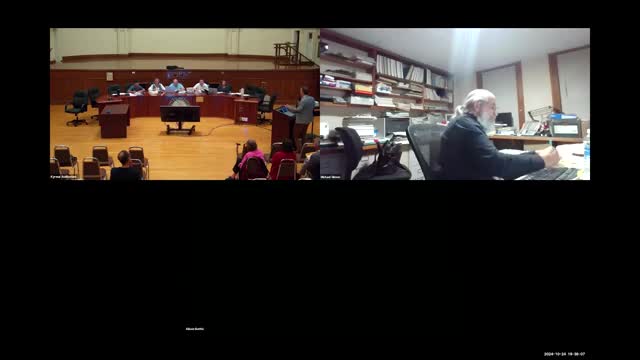Developer pivots plans amid community backlash over large home
October 25, 2024 | Gloucester City, Essex County, Massachusetts
This article was created by AI summarizing key points discussed. AI makes mistakes, so for full details and context, please refer to the video of the full meeting. Please report any errors so we can fix them. Report an error »

In a recent government meeting, discussions centered around a contentious zoning issue involving a unique topographical condition in a residential area. The primary focus was on a specific lot that, if not granted an exception, could become unbuildable due to its designation as a dune.
Officials highlighted that the majority of the R20 zoning district does not share this dune characteristic, making the situation particularly unique. The conversation revealed that if the exception were denied, the entire 80,000 square-foot lot would be rendered unbuildable, as only a fraction of the area could be counted towards the required lot size due to wetland restrictions.
The meeting also revisited a previous plan where an existing house was set to be significantly expanded. This plan faced community backlash, leading the property owner to reconsider their approach. Instead of pursuing the large single-family home, the owner opted to split the lot and construct two smaller houses, aiming to align with the neighborhood's character and mitigate opposition.
Despite the adjustments, concerns remain among some community members about the impact of new construction on the area. The discussions underscored the ongoing tension between development and community sentiment, as well as the complexities of zoning regulations in unique environmental contexts.
Officials highlighted that the majority of the R20 zoning district does not share this dune characteristic, making the situation particularly unique. The conversation revealed that if the exception were denied, the entire 80,000 square-foot lot would be rendered unbuildable, as only a fraction of the area could be counted towards the required lot size due to wetland restrictions.
The meeting also revisited a previous plan where an existing house was set to be significantly expanded. This plan faced community backlash, leading the property owner to reconsider their approach. Instead of pursuing the large single-family home, the owner opted to split the lot and construct two smaller houses, aiming to align with the neighborhood's character and mitigate opposition.
Despite the adjustments, concerns remain among some community members about the impact of new construction on the area. The discussions underscored the ongoing tension between development and community sentiment, as well as the complexities of zoning regulations in unique environmental contexts.
View full meeting
This article is based on a recent meeting—watch the full video and explore the complete transcript for deeper insights into the discussion.
View full meeting
